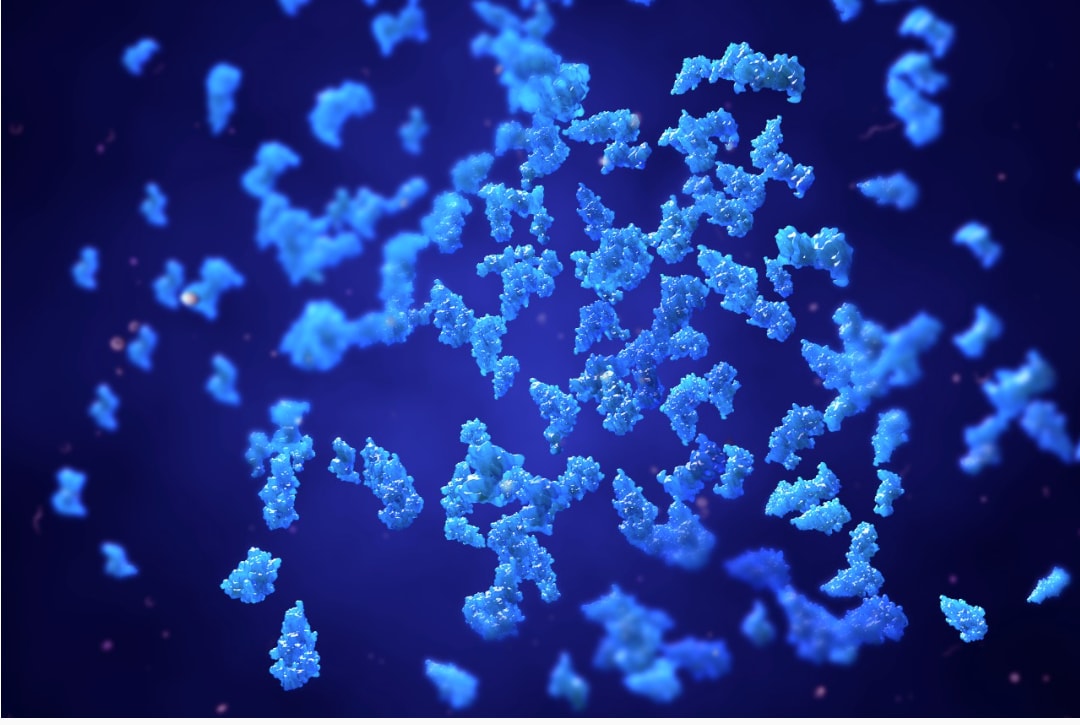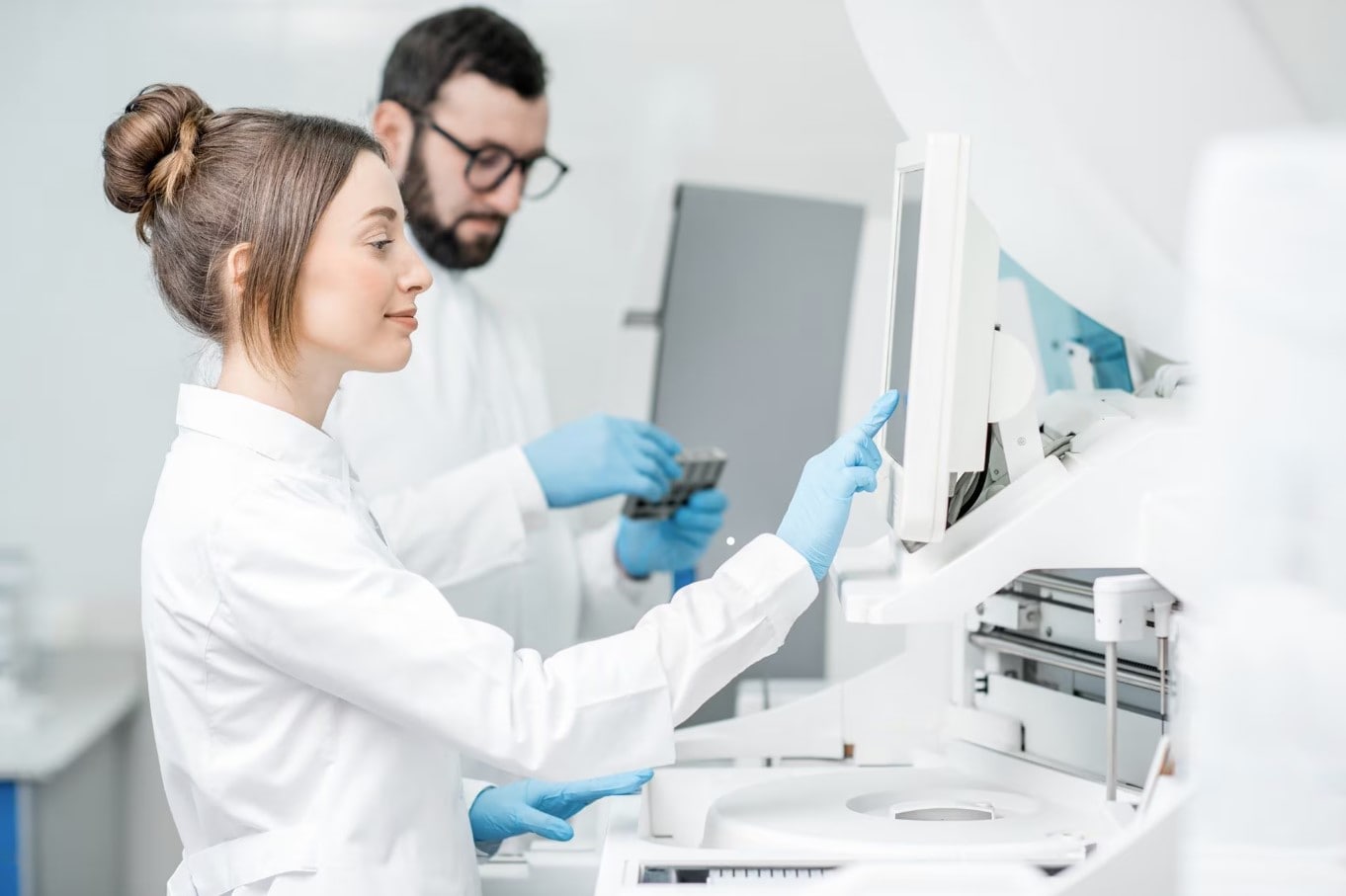利用色谱技术改进、保留和分离极性化合物

分离和保留极性化合物是色谱法面临的重大挑战。在此,我们将以先进的色谱技术和色谱柱技术为重点,探讨有效处理这些化合物的关键技术考虑因素和解决方案。
什么是极性化合物?
极性化合物能够与水和其他极性物质相互作用,因此在生物过程、药物设计和工业应用中至关重要。极性化合物在药物溶解性和新陈代谢(包括 DNA 和蛋白质)中发挥着至关重要的作用。
极性化合物的两端分别带有明显的正电荷和负电荷。这些电荷之间的距离越大,化合物的极性就越强。这种极性使得使用通常为非极性化合物设计的传统反相色谱法保留和分离极性化合物变得更加复杂。
既然极性化合物因电荷相反而自然相互吸引,那么如何才能使极性化合物与非极性固定相相互作用呢?这需要仔细考虑色谱条件。
极性化合物分析色谱技术
- 反相高效液相色谱法(RP-HPLC):由极性流动相组成,通常是水或缓冲水与甲醇、乙腈或四氢呋喃等非极性溶剂的混合物。固定相为非极性,是通过将长链碳氢化合物官能团键合到二氧化硅、固态核心、聚合物或混合颗粒支持物上而形成的。这种技术适用于非极性化合物,但需要合适的工具才能有效处理高极性分析物。
- 混合模式色谱法:混合模式色谱法(利用多种分离机制有效分离分析物的技术)有多种类型, 反相离子交换色谱法常用于极性分析物分析,包括蛋白质纯化,它结合了反相和离子交换机制,可提高极性化合物的保留率,同时兼顾非极性分析物。离子交换色谱使用带有负电荷功能基团的固定相吸引并结合样品中带有正电荷的分子(阳离子),而反相离子交换色谱则不同,它结合了反相和离子交换两种机制,可提高极性化合物的保留率,同时仍可分离非极性分析物。
- 亲水相互作用色谱(HILIC):亲水相互作用色谱是反相高效液相色谱的补充色谱技术,可成功提高极性分析物的保留率。富含乙腈的低水含量流动相与极性固定相一起使用可提高保留率,使分析物按亲水性或极性增加的顺序洗脱。
根据样品的极性和电荷,上述每种方法在特定条件下都能有效地分析极性化合物。让我们来详细了解一下。
反相高效液相色谱 (RP-HPLC):障碍与解决方案
反相液相色谱法(RP-HPLC)通常与 C18 色谱柱配合使用,通常用于非极性化合物,但在处理高极性分析物时往往会遇到困难,使保留和分离变得更具挑战性。这种方法有几个局限性,包括
- 保留能力不足:C18 色谱柱可能无法有效保留高极性分析物。
- 离子配对剂:这些药剂可以提高保留率,但通常需要较长的平衡时间,而且可能与质谱(MS) 。
- 脱水:这种现象发生在水性流动相从非极性孔中排出时,导致保留损失。
为了提高极性分析物在 RP-LC 中的保留率,沃特世开发了可优化配体密度和孔径的增强型 RP-HPLC 技术:
- T3 色谱柱:这些色谱柱具有较低的 C18 配体密度和较大的孔径,可减少露湿并提高极性分析物的保留率。
- CORTECS T3 Columns以其固芯技术而闻名,可与 100% 的水溶液条件兼容,并在广泛的 pH 值范围内提供出色的峰形。
利用混合模式色谱扩大选择性并提高保留率
混合模式色谱允许修改流动相组成,包括缓冲液 pH 值、离子强度和有机溶剂含量,从而为方法开发提供了更大的灵活性。然而,传统的混合模式色谱柱也面临着一些挑战:
- 可重复性问题:批次与批次之间的差异会导致保留和分离效果不一致。
- 非特异性吸附 (NSA):由于极性酸与色谱柱表面之间不必要的相互作用,会造成样品损失,从而降低回收率和准确度。
为了克服这些限制,沃特世开发了先进的混合模式技术,以提高色谱柱的性能和可靠性--无需使用离子配对剂,简化了流动相制备过程,并提高了质谱兼容性。此外,调整流动相离子强度、pH 值或有机溶剂成分可提高选择性。
- 反相离子交换:该技术结合了反相和离子交换机制,可同时保留极性和非极性分析物。
- Atlantis Premier BEH C18 AX Columns:这种色谱柱提高了对极性酸的保留能力,增强了重现性和 pH 值稳定性,减少了传统混合模式色谱柱的批次间差异和非特异性吸附(NSA)。它采用混合配体方法,将离子交换基团与 C18 配体结合在一起。配备 MaxPeak 高性能表面(HPS) 这样可以防止样品损失,确保样品保留的一致性。
利用 HILIC 色谱增强 LC-MS 兼容性
HILIC 采用极性固定相和富含乙腈的流动相,提高了高极性分析物的保留和分离能力。它非常适合糖类、代谢物、氨基酸和极性农药等反相方法难以分离的物质。虽然 HILIC 的洗脱模式与正相类似,但它使用的是反相有机-水溶剂系统,有助于克服正相色谱法的一些难题:
- 有限的分析溶解度
- 专用 LC 系统要求
- 检测重现性差
- 电喷雾质谱兼容性有限
为应对这些正相挑战,沃特世开发了先进的技术,可提高保留率、选择性和重现性,同时增强与 LC-MS 应用的兼容性。
- HILIC:通过使用高浓度的有机流动相(通常大于 80% 的乙腈),HILIC 可提供最佳的峰形、更高的灵敏度和更好的质量规格性能。
- Atlantis Premier BEH Z-HILIC Columns:该色谱柱采用齐聚硫基甜菜碱配体,可提高极性化合物的保留率和独特的选择性。它还结合了 MaxPeak HPS 技术y,从而最大限度地减少消极安全保证。
色谱仪的关键考虑因素:获得可靠结果的最佳实践
要获得一致且高质量的色谱结果,需要在方法准备和实施过程中注重细节。这些实用技巧将帮助您优化不同色谱技术的峰形和重现性。
- 流动相制备:使用水性缓冲液在固定相上形成稳定的水层,这对 HILIC 至关重要。
- 色谱柱平衡:预留足够的平衡时间,以确保结果的可重复性。HILIC 可能比反相方法需要更多时间。
- 样品稀释剂:使样品稀释剂与初始流动相条件相匹配,以保持峰形和峰面积。对于大多数极性分析物,HILIC 建议使用 75/25 乙腈-甲醇混合液。
要有效保留和分离极性化合物,就必须深入了解其所面临的独特挑战,并应用先进的色谱技术。通过利用增强型色谱柱技术和优化色谱法,您可以更好地保留和分离极性分析物,从而实现更高效、更准确的分析。
本博客提供了一个高层次的概述,但 我们的随选网络研讨会 深入探讨每种色谱技术,为您提供完善应用所需的详细信息,以获得最佳效果。不确定哪种色谱柱适合您的极性化合物?查看 Column Selection Guide for Polar Compounds.


